-
Car Reviews
- All reviews
- Midsize SUVs
- Small cars
- Utes
- Small SUVs
- Large SUVs
- Large cars
- Sports SUVs
- Sports cars
- Vans
Latest reviews
- Car News
-
Car Comparisons
Latest comparisons
- Chasing Deals
The fifth-generation Land Rover Discovery has been on sale for five years, and while this large SUV is undoubtedly great off-road the arrival of the new Defender means the Discovery is best for those who want to tow and enjoy the plush ride.
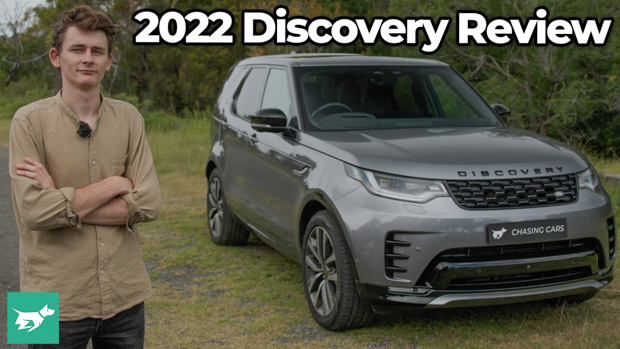
Land Rover’s three-row Discovery large SUV was once the brand’s most comfortable off-roader offering, but with the arrival of the in-vogue Defender 110 in early 2021, the question arose of what purpose the fifth-generation Discovery serves in the British 4×4 specialist’s range. Did the impressive new Defender render the ‘Disco’ purposeless?
Well, no – the fifth-generation Discovery, with its transition to a full unibody platform on arrival in Australia in 2017, gave this SUV a wholly more refined on-road experience and a more family-friendly body that is softer and arguably more approachable than the rugged Defender.
Since the ‘D5’ generation’s market launch in Australia, things have improved further: in 2020, the Discovery picked up the option of a smooth ‘Ingenium’ turbo-diesel inline-six engine replacing the ageing Ford-JLR-PSA Lion V6 (that soon launches as a ‘new’ engine in Ford’s Ranger pick-up), while the the slow-selling base ‘SD4’ 2.0-litre four-cylinder turbodiesel was dropped from the Australian lineup entirely.
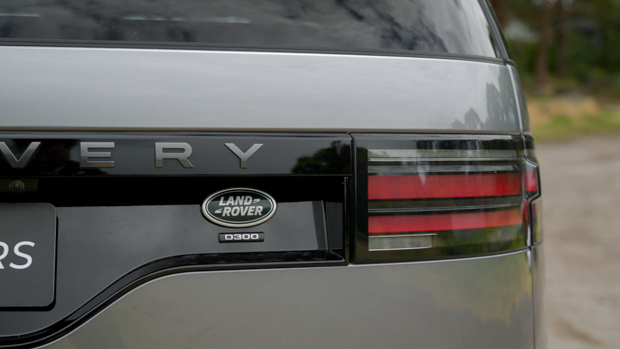
So with its slick new diesel engine and plush air suspension, our $134,541 (as-tested) Discovery D300 SE R-Dynamic with its jutting chin spoiler, black-pack and 21-inch alloy wheels could be the perfect urban Discovery – a real ‘Toorak tractor’ rival for premium large SUVs such as the BMW X7, Mercedes-Benz GLS and Audi Q7.
Our test commenced in Sydney’s potholed inner west, where the Discovery’s standard fit air suspension immediately impressed with its ability to waft over concrete expansion joints and poorly-maintained urban roads. There are several off-road modes (including Mud Ruts and Sand) to select, but left to its own devices in Auto, the Discovery reads the road ahead and adjusts the firmness of the springs to curtail mid-corner roll or prepare for a set of bumps.
There is a small amount of lateral head-toss movement that comes from the Discovery’s soft ride, but it’s the sort of subtle rocking that would put an infant to sleep rather than encourage travel sickness.
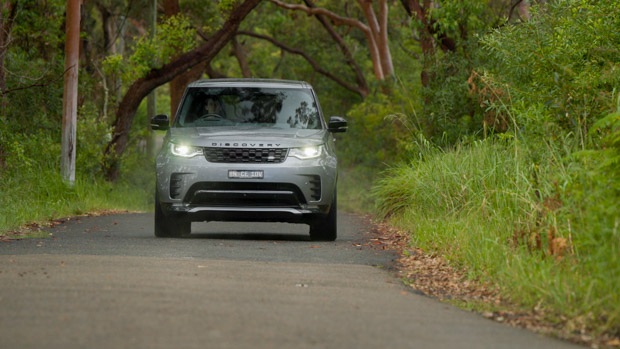
Cabin isolation in general is excellent and even the wide 275/40R21 Pirelli Scorpion all-season tyres can’t drum up enough roar to break the serenity inside at 100km/h on coarse chip bitumen. Only occasionally do the 21-inch alloys catch a sharp edge and transmit a minor shock into the cabin.
Under the Discovery’s bonnet is the mild-hybrid boosted 221kW/650Nm ‘D300’ twin-turbo diesel inline-six that replaces the old 3.0-litre turbo diesel V6. As solid as the Lion was, this Ingenium is a real peach with peak torque spread between 1500-2500rpm and silky smooth operation. With the diesel six, the Discovery is capable of dispatching the 0-100km/h sprint in 6.8 seconds (claimed) and towing a 3.5-tonne braked load.
The Discovery is brisk in a straight line, but its slow steering and large diameter four-spoke wheel are gentle reminder that, while capable, this is no sports SUV – a task Land Rover leaves to the upmarket Range Rover Sport SVR.
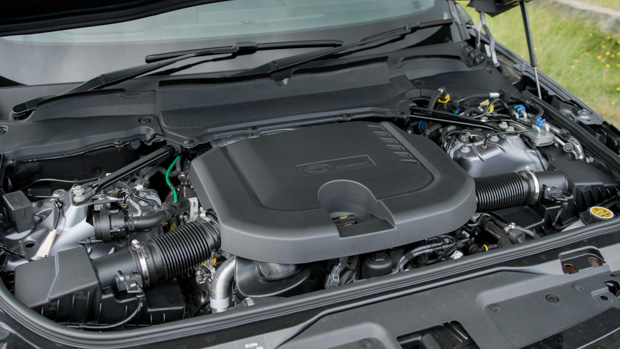
As you would guess from the exterior styling, the Discovery’s large C-pillar does impede rear three-quarter visibility, however the ultra-sharp 360-degree camera gives a full top-down view of the vehicle as well as selectable camera angles to help spot curbs when parking.
Active safety systems include forward AEB with pedestrian and cyclist detection, lane-keep assist, blind-spot monitoring and rear-cross traffic alert. The Discovery is also fitted with adaptive cruise control and lane-trace asist, though the systems don’t work with the precision of a BMW X7’s. In 2017 the Discovery scored five-stars in ANCAP safety testing.
While we spent only a few kilometres on dirt, our test car was outfitted with a host of off-road technology including the $3,970 off-road pack with automatic Terrain Assist 2 program and a $1110 electronically-controlled limited-slip differential.
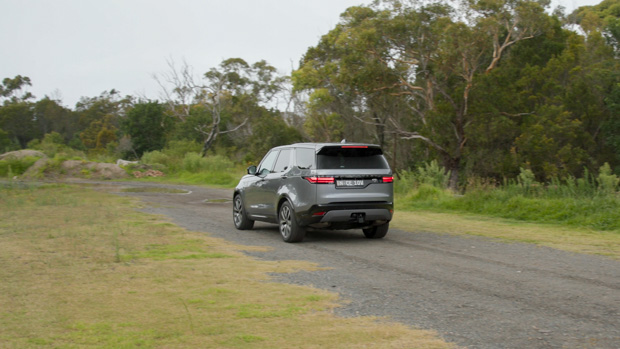
Even though this Discovery R-Dynamic’s low-hanging front valance and 40-series tyres don’t look suited to rough-and-tumble off-roading from the outside, its 900mm wading depth (200mm more than a Land Cruiser 300 Series!), 283mm ground clearance and air suspension that can inflate its bags to simulate a solid rear axle mean in a lower specification without the sporty bodykit the Discovery would certainly lend itself better to some bush-bashing.
That being said, we experienced technical difficulties with the Discovery’s standard four-wheel drive system, with a message displayed in the digital cockpit warning of a 4WD failure: “OK to drive with caution – 2WD only, traction reduced”.
Despite the message, torque appeared to still be sent to the front wheels. JLR are aware of the glitch, and we’ll update our review with their diagnosis when received.
Land Rover has spent years honing the Discovery driving experience including off-road aids and air suspension settings, but the interiors generations past never received the same attention in development that this luxurious fifth-gen car clearly did.
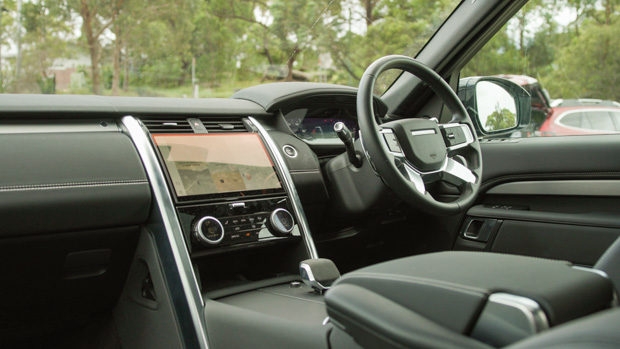
The latest design is crisp and fits in with the broader JLR interior design language, with quality feeling leather upholstery on the seats with their captain’s armrest. Hard-wearing neoprene-esque fabric features appropriately on heavy touchpoints and there are lashings of premium soft-touch materials on the dash and door tops.
The centrepiece of the Discovery’s cabin is an 11.4-inch touchscreen running JLR’s latest Pivi Pro system with wireless Apple CarPlay, wireless Android Auto, over-the-air software updates and Amazon Alexa voice functionality. There’s also a customisable 12.3-inch digital driver’s display that can show maps, trip information or current media.
On the Discovery’s physical climate control panel you’ll notice a silver button, press it and a secret flock-lined cubby perfect for storing valuables or snacks opens up. The Discovery also has dual glove boxes, space for three one-litre water bottles in each front door, an optional cool box ($850) and two central cupholders which slide forward to reveal a deep space perfect for small bags or sunscreen bottles.
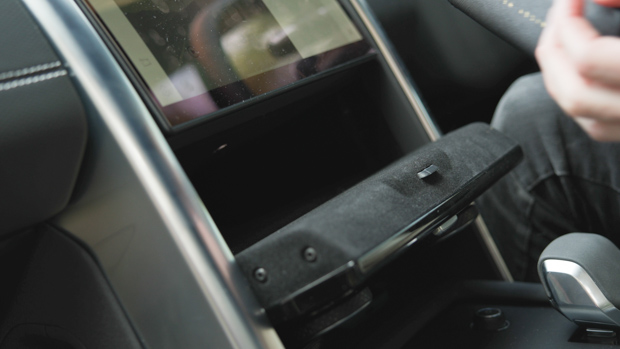
Ahead of the centre console there’s also a wireless charger that is a $455 option, which seems like penny-pinching on a car of this price. Also odd is the lack of standard heated seats ($806 extra) when Land Rover includes a powerful and crisp 14-speaker Meridian stereo as standard on this SE. The two sunroofs, rear privacy glass and four-zone climate control bundled into the family pack add a further $3,515 to the Discovery’s sticker price.
Our tester Discovery’s options came to a total additional cost of $21,076 (enough to buy a Kia Picanto GT-Line hatchback!) and brought the price of this SE above the range-topping $126,570 HSE, which comes standard with heated seats.
Moving into the second row there and back to the Discovery’s practicalities which include USB-A charge points on the back of the front seats and an accessory tablet holder. There are a further two USB-C ports, a 12-volt socket and another USB-A port below the climate controls.
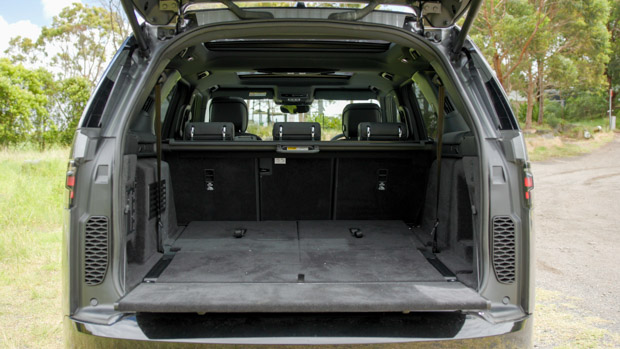
The second-row bench lacks under-thigh support, and although the seats have manual slide adjustment, to be comfortable the bench needs to be all the way back. Similarly, the electrically-adjustable backrest only feels right in its most reclined position, though the bench is easily broad enough for three adult passengers. Folding the second row requires pressing and holding an electric switch which is hassle-free (if a lot slower than a simple manual lever).
Fitting the Chasing Cars child seats was no trouble as the Discovery has Isofix ports on both outboard second row seats beneath a simple-yet-smart leather flap, broad door apertures and tall roofline. There are top tether anchor points for all the second and third-row seats.
The standard power tailgate’s operation was only intermittent on test, often only opening after pulling on it manually. Once inside there’s a power-dropping rear lip that you can fold out and sit on and capacity is 1137-litres in five-seat configuration (enough for 54 soccer balls, which is a fair way adrift of the the 69 you can fit in a Hyundai Palisade), or 258-litres with the third row in place.
Compared to the old Lion-series TD6 diesel engine, the new ‘Ingenium’ D300 with its 48-volt mild-hybrid system is surprisingly less efficient in official ADR consumption figures. The combined consumption for the newer engine is 7.5L/100km against 7.2L/100km for the old powertrain.
That said, our real-world testing saw the Discovery record an 8.4L/100km figure – impressively close to the claim and more than reasonable given the heft and torque on offer. However, running only in town saw the figure climb quickly to 13L/100km.
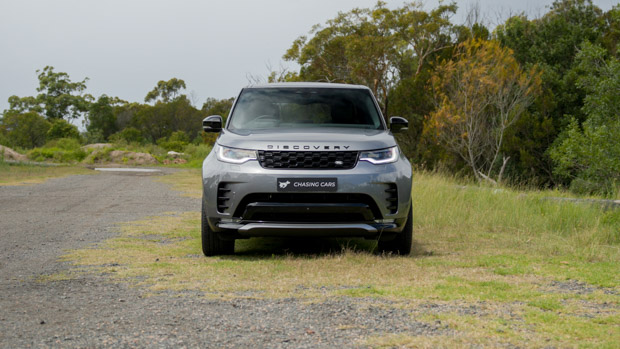
Servicing is carried out on a condition-based model similar to BMW where the Discovery will prompt you when it’s time for maintenance. A service package that covers five years or up to 130,000km will set you back $2650.
For comparison, a BMW X7 will cost $2370, an Audi Q7 $3410, while a Toyota Land Cruiser requires maintenance every six months or 10,000km at a cost of $3750 over five years.
Land Rover has recently moved to a five year, unlimited kilometre warranty along with Audi, Lexus and Mercedes-Benz.
Land Rover now has two large, off-road capable vehicles that sit in the same category – this Discovery and the Defender 110 but it’s the car we’ve tested that feels the most at home in the city and offers vast interior space and practicalities for a family.
The Discovery isn’t perfect: our week of testing unearthed a few electrical gremlins and some shoddy build quality inside the cabin. It’s also unfortunate that this mid-spec SE doesn’t come standard with heated front seats.
And yet, when the Discovery is on-song it’s a dream to drive. That smooth and muscular twin-turbo diesel inline six soothes the soul and the plush air suspension soaks up the worst of Sydney’s imperfections with ease.
The fifth-gen Discovery’s bonafide off-road credentials and handsome exterior certainly help the Discovery stand out from its German rivals.
Variant tested D300 R-DYNAMIC SE (221KW)
Key specs (as tested)
About Chasing cars
Chasing Cars reviews are 100% independent.
Because we are powered by Budget Direct Insurance, we don’t receive advertising or sales revenue from car manufacturers.
We’re truly independent – giving you Australia’s best car reviews.
The estimate provided does not take into account your personal circumstances but is intended to give a general indication of the cost of insurance, in order to obtain a complete quote, please visit www.budgetdirect.com.au. Estimate includes 15%^ online discount.
^Conditions Apply
Budget Direct Insurance arranged by Auto & General Services Pty Ltd ACN 003 617 909(AGS) AFSL 241 411, for and on behalf of the insurer, Auto & General Insurance Company Limited(ABN 42 111 586 353, AFSL 285 571).Because we don’t know your financial needs, we can’t advise you if this insurance will suit you. You should consider your needs and the Product Disclosure Statement before making a decision to buy insurance. Terms and conditions apply.
Indicative quote based on assumptions including postcode , 40 year old male with no offences, licence suspensions or claims in the last 5 years, a NCD Rating 1 and no younger drivers listed. White car, driven up to 10,000kms a year, unfinanced, with no modifications, factory options and/or non-standard accessories, private use only and garaged at night.
^Online Discounts Terms & Conditions
1. Discounts apply to the premium paid for a new Budget Direct Gold Comprehensive Car Insurance, Third Party Property Only or Third Party Property, Fire & Theft Insurance policy initiated online on or after 29 March 2017. Discounts do not apply to optional Roadside Assistance.
2. Discounts do not apply to any renewal offer of insurance.
3. Discounts only apply to the insurance portion of the premium. Discounts are applied before government charges, taxes, levies and fees, including instalment processing fees (as applicable). The full extent of discounts may therefore be impacted.
4. We reserve the right to change the offer without notice.